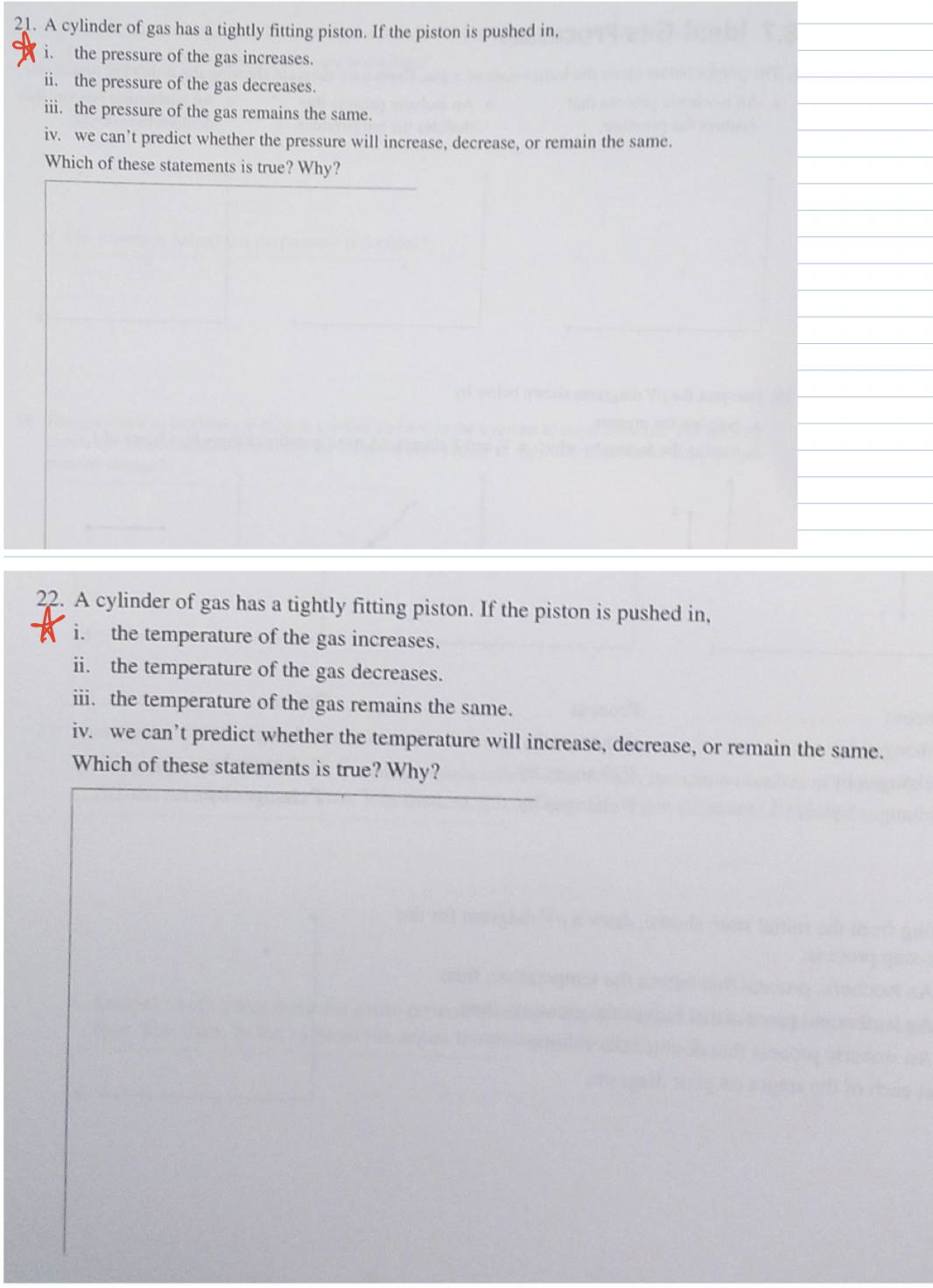21. A cylinder of gas has a tightly fitting piston. If the piston is pushed in, * i. the pressure of the gas increases. ii. the pressure of the gas decreases. iii. the pressure of the gas remains the same. iv. we can't predict whether the pressure will increase, decrease, or remain the same. Which of these statements is true? Why?
Kinetic Theory of Gas
The Kinetic Theory of gases is a classical model of gases, according to which gases are composed of molecules/particles that are in random motion. While undergoing this random motion, kinetic energy in molecules can assume random velocity across all directions. It also says that the constituent particles/molecules undergo elastic collision, which means that the total kinetic energy remains constant before and after the collision. The average kinetic energy of the particles also determines the pressure of the gas.
P-V Diagram
A P-V diagram is a very important tool of the branch of physics known as thermodynamics, which is used to analyze the working and hence the efficiency of thermodynamic engines. As the name suggests, it is used to measure the changes in pressure (P) and volume (V) corresponding to the thermodynamic system under study. The P-V diagram is used as an indicator diagram to control the given thermodynamic system.

The ideal gas equation is given by-
where,
Trending now
This is a popular solution!
Step by step
Solved in 3 steps









